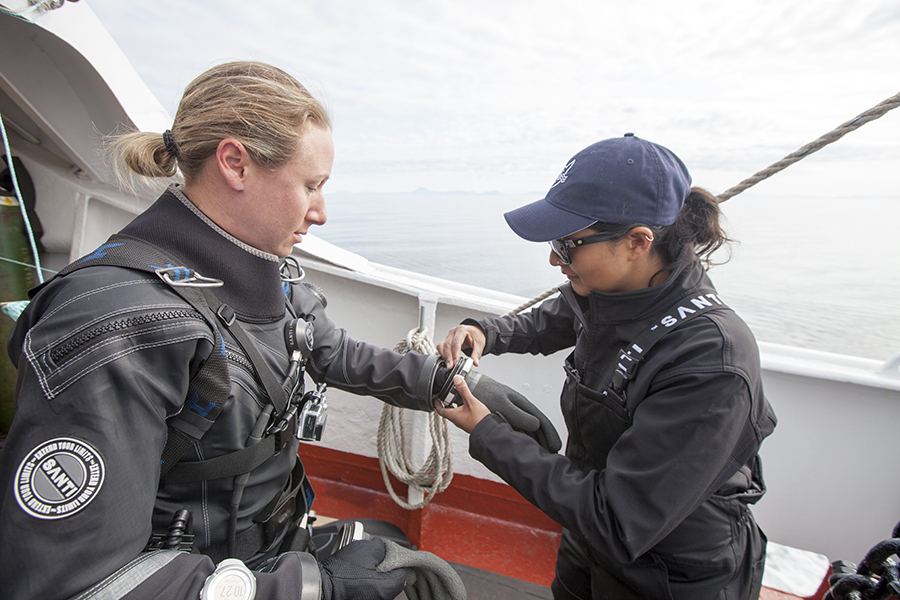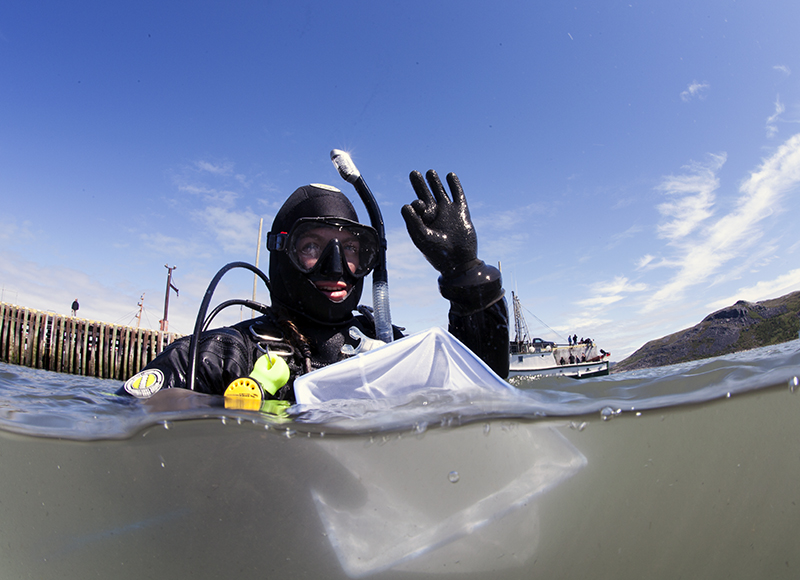There is no arguing that women’s hands are smaller than men’s, yet there are few underwater gloves that have been designed for a woman’s hand. When you choose a pair of gloves of any thickness, ensure they are snug. The gaps between the glove’s fingers should nestle right down into the web between your own fingers. When they are pushed down, you want the fingertips to hit the very top of each finger pocket. In the case of three-finger mitts, it is critical that the index finger touches the top of the finger pocket. If you have a little extra glove hanging over the top of your finger, it will rob you of your dexterity.
If you are selecting a dry glove system, the same fit tips are true. Dry gloves are a two-part system. The inner glove functions as insulation and the outer glove serves as waterproofing. When attached to a dry suit, the diver generally leaves the thumb loop from their undergarment in the wrist seal of the dry suit to allow some air transfer between the glove and the suit while still maintaining most of the seal in case of a flood. When the outer glove is donned on the surface, it is done so leaving some air in the glove. As you descend, the outer glove compresses somewhat and improves dexterity as it becomes more form fitting. The thumb loop from your undergarment offers just enough space to allow more air from the suit to enter the glove as you descend, equalizing it along the way. On ascent, the reverse takes place. The extra gas in the glove will travel back into your suit without you even noticing it. If you fail to leave something in the wrist seal for air transfer, then you will reach about 30 feet or 10 meters and find the gloves to be too tight, preventing further descent.
Form fitting gloves will not only keep you warm but also make diving easier when you can easily operate all your clips and buckles without assistance.


